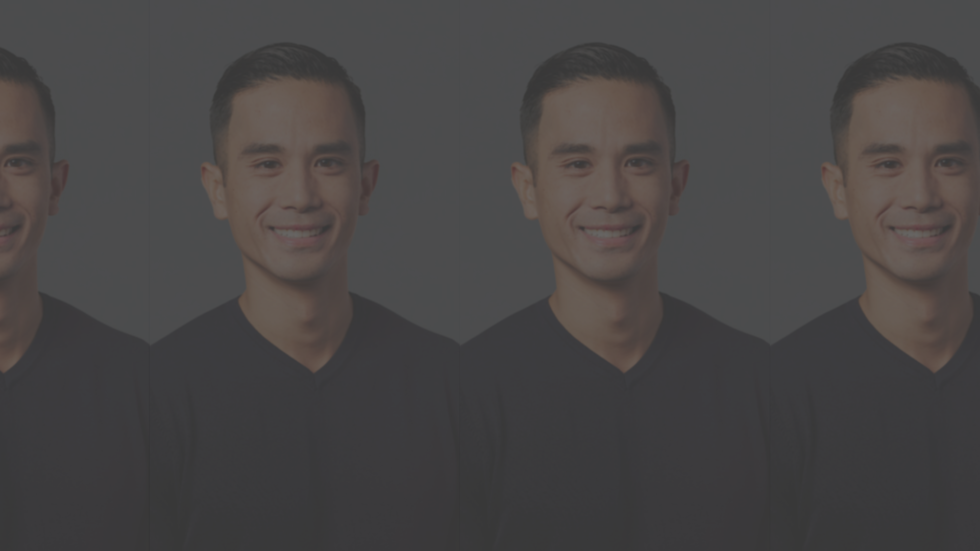
One of Board Certified Orthodontist Giancarlo Santos’s favorite aspects to his career is the fact that his patients deeply appreciate his efforts. Recalling an instance when one of his patients had just gotten her braces off, Santos had given her a fantastic cosmetic result, and she had pulled him aside to express her appreciation for his services.
“She’s like, ‘Hey, I just wanted to give you a hug, because this has been the most phenomenal experience, and now I feel like I’m so much more confident in how I present myself to people and at work and socially,’” Santos said. “And she gave me a big hug.”
According to Santos, a significant complaint about the field of orthodontics is that the industry is perceived as very production-focused, meaning that healthcare is seen as a “commodity” that aims to generate money and maintain a successful business. However, he takes pride in the fact that he invests a great amount of time and effort into his patients, despite the fact that much of orthodontics has fallen into that “trap.”
“I take pride in knowing that if you decide to come to my office and become my patient, I need to make sure that every single step of your treatment and the result that you get at the end of two years has to be amazing,” Santos said.
Undergraduate, dental school, and residency years
Santos left his hometown in Los Angeles to attend Notre Dame University, where he pursued a dual business and biology major on the pre-medical track. At the time, he was unsure of his career trajectory, but he continued to take a number of challenging core biology classes, which he described as both “challenging and rewarding.”
“I knew that, either entering medicine or entering dentistry, that at some point in my career, I would like to be running my own practice,” Santos said. “And so I thought that having some kind of business exposure, which is a different kind of training and mindset in college and education, was much needed.”
By his second year of college, Santos switched his pre-professional track from medicine to dentistry, a “semi-last minute” switch that offered a better work life balance and would be more of a “guarantee” than going into medicine.
Upon graduating from Notre Dame, Santos attended the University of California Los Angeles School of Dentistry. During his second year, he decided to specialize in orthodontics.
“It was mainly because I thought that being in general dentistry — and same thing kind of with family medicine — is that you have to be good at everything, but you’re not really the best at one thing within the field,” Santos added.
In dental school, Santos completed two years of preclinical studies — similar to the first two years of medical school curriculum — followed by two more years of clinical studies. He said that the preclinical years encompassed some of the most intense studying of his life, noting that it was a heavy course load filled with an abundance of testing and “jam packing” their quarters with clinical requirements.
“I didn’t really enjoy that part of it, and in terms of taking anatomy and physiology and taking microbiology — you’re really taking a lot of the core sciences over again, but at a more intense level,” Santos said. “I would say that once I went to clinical dentistry and started being more hands on with patients, that’s when I started to enjoy it a little bit more.”
After receiving his Doctorate of Dental Surgery, Santos continued on towards residency at University of Pittsburgh, an experience he noted as much easier than dental school. During this time, Santos published research in the Cleft Palate Craniofacial Journal about the occurrence of incidental findings — findings in a cone-beam computed tomography image that are unrelated to the main purpose the imaging was originally meant for.
The study specifically focused on cleft lip and palate, a condition where the roof of the mouth does not close during pregnancy. With this publication, Santos noted the translational gap between research and the clinic.
“While the subject matter of my research is important in academic circles, I did not find direct application in my work as an orthodontist on a daily basis,” Santos added.
Santos added that the most memorable moment of his residency was graduation, which was a small cohort of only four residents and their attending professors. During the ceremony, each resident stood and reflected upon their experiences during their long years of schooling.
“I was the last one to speak, and I teared up a little bit,” Santos said. “And it’s because it was the combination of 11 years of study, and a majority of which was not easy — and it was finally stepping into being an adult, and finally practicing what I’ve been trained to do for so long.”
In his speech, Santos thanked his mother for never pushing him to be successful and for not putting external pressure to push him in his career trajectory. He noted that his determination was all internally motivated, and reaching the final stages of his education was because of his own self.
Education beyond graduation
“[The patients] don’t know what I do, clinically, in their mouth … it’s how I make them feel at the end of the appointment that really makes a difference,” Santos added. “I would say the most challenging part, post-education, is really knowing how to connect to patients.”
Soon after Santos started practicing dentistry, he immediately realized that dental school and residency did not fully teach him everything about being an orthodontist. He noted that it was “scary” at the time, because he truly had to learn on the job.
Specifically, the clinical expertise was a “piece of cake,” and felt instinctive, but the business aspect of running a practice was a whole different field, even with the business coursework he completed in college.
“When it comes to the business aspect of it, there’s a lot of variables that are out of your control: the economy, your staff, your team members, your relationships with the dental community … all of that goes into running a successful business,” Santos said.
Santos added that as an orthodontist, he frequently becomes preoccupied with business, staffing, and the technical components of private practice, so he forgets to realize the impact he has on people’s lives. Such expressions of gratitude, he said, are the primary reason he is enthusiastic to go to work every day.
A significant challenge Santos noted was his customer service skills, which was one of the more difficult things he had to pick up on during his post-grad years. He spent a lot of time developing the way he connected with his patients by controlling his body language, word choice, and tone, making sure to clearly communicate any procedures to ensure that the patient was happy and fully understood his advice.
“I finished residency in 2016, and I still have quite a few years ahead of me, a lot still to learn of how to run a successful business,” Santos added.
One of Santos’s primary future goals is to oversee and mentor younger doctors by switching to an operational role in his clinic, which would entail taking a step back from directly treating patients to oversee the clinic as a whole. Along with helping doctors in his own clinic, Santos hopes to give back to the system that made him an orthodontist by lecturing at universities for residents and other dental students.
“I do think that’s one part of my career that I would like to give back,” Santos said. “Especially since I’ve always been on the other end of it.”



